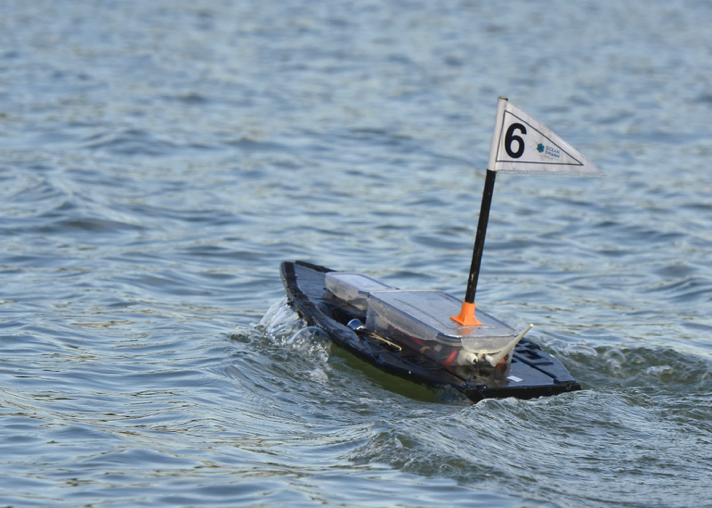Swarm of aquatic robots learns to cooperate by themselves
February 1, 2016

Aquatic surface robot (credit: Biomachines Lab)
Portuguese researchers have demonstrated the first swarm of intelligent aquatic surface robots in a real-world environment.
Swarms of aquatic robots have the potential to scale to hundreds or thousands of robots and cover large areas, making them ideal for tasks such as environmental monitoring, search and rescue, and maritime surveillance. They can replace expensive manned vessels and can put the crew out of danger in many maritime missions.
“Swarm robotics is a paradigm shift: we rely on many small, simple and inexpensive robots, instead of a single or a few large, complex and expensive robots,” said Anders Christensen, Ph.D., the principal investigator in the project.
The researchers, from the Institute of Telecommunications at University Institute of Lisbon and from University of Lisbon in Portugal, used nature-inspired approaches for designing their robotic swarm. Instead of manually programming the robots to carry out a mission, evolutionary algorithms are used to synthesize the controller of each robot.
Evolutionary algorithms mimic Darwinian evolution to automatically generate the artificial neural network that allows the robots to carry out the missions autonomously, without a human operator or a central control station. The team demonstrated the capabilities of a swarm with up to ten robots in various collective tasks, including area monitoring, navigation to waypoint, aggregation, and dispersion.
Each robot costs only €300 in materials. The hull of the robots is built from CNC-machined polystyrene foam, and fitted with 3D-printed components. Each robot is equipped with GPS and compass, it can communicate with neighboring robots using Wi-Fi, and the software runs on an onboard $40 Raspberry Pi 2 computer.
The team is now developing the second generation of their aquatic robots, which will be equipped with more advanced sensors and able to carry out long-term missions at sea. The research was funded by Fundação para a Ciência e Tecnologia, Portugal.
AAAI Video Competition | A Sea of Robots
Abstract of Evolution of Collective Behaviors for a Real Swarm of Aquatic Surface Robots
Studies on swarm robotics systems have shown the potential of large-scale multirobot systems based on decentralized control. So far, studies have been mostly conducted in simulation, and the few that have been conducted on real robots have been confined to laboratory environments. In this paper, we present experiments with an autonomous swarm of up to ten aquatic surface robots, conducted in a real and uncontrolled environment. We evolve neural network-based controllers in simulation for canonical swarm robotics tasks, and then assess their performance on real hardware. Our results show that the evolved controllers generally transfer well to the real robots, displaying a similar performance to that obtained in simulation, and similar behavior patterns. We also show that the evolved control maintain key properties of swarm intelligence-based control, namely scalability, flexibility, and robustness. We conclude with a proof-of-concept experiment in which the swarm performs an environmental monitoring task by combining multiple evolved controllers.